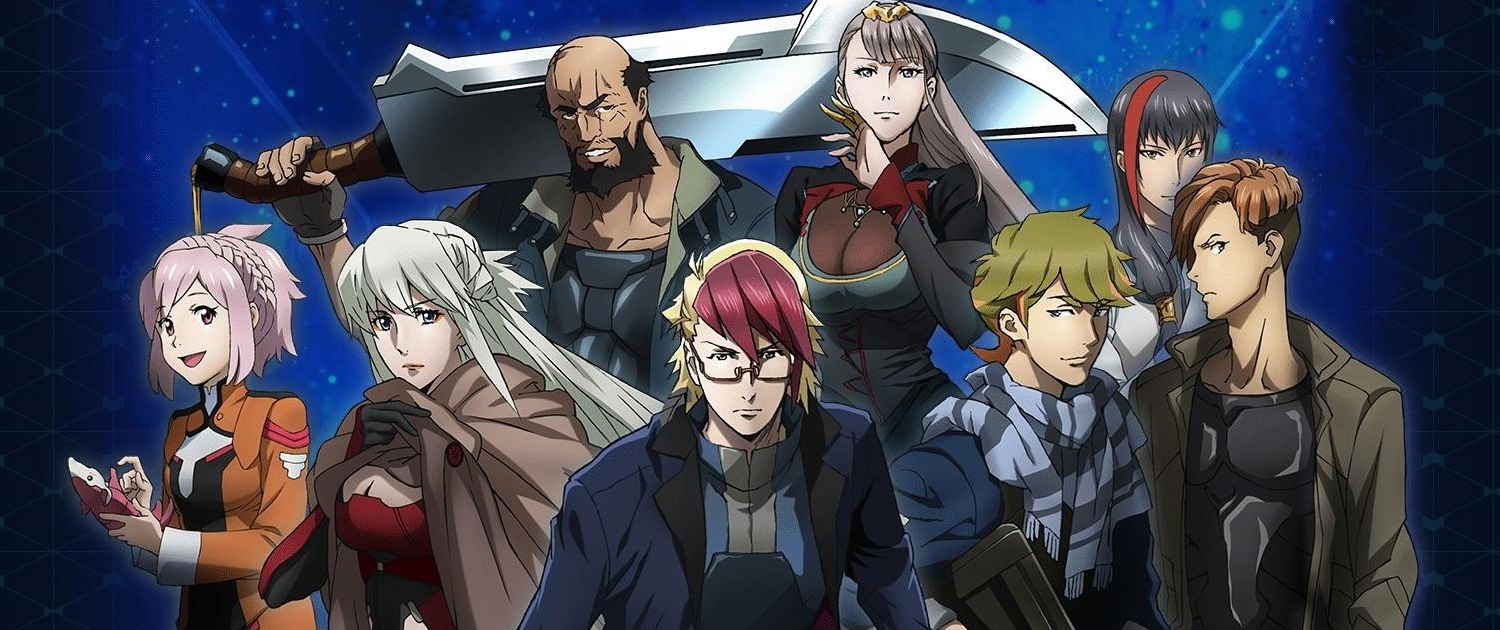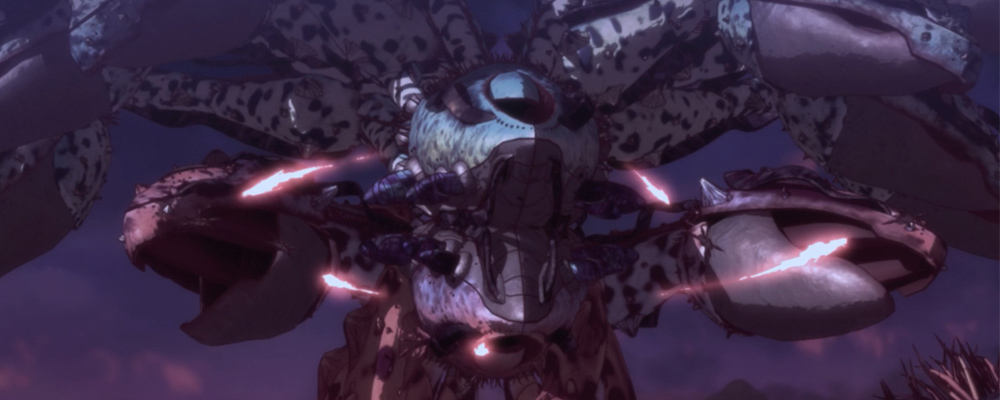Netflix’s Last Hope, aka Juushinki Pandora, is a mecha anime without mechs
Yep. Every cliche is just about represented here.
Anything that has Shōji Kawamori’s name all over it usually involves viewers wearing comfortable clothes, sitting in a reclined position on their couch and having a decent amount of hours set aside to binge because you’re in for a guaranteed rip-roaring good time.
For fans of mecha inspired anime like myself his name brings with it huge amounts of respect and admiration; he’s the genius behind Macross, he was a starship designer for Space Battleship Yamato and his design credits include Aquarion, Patlabor, Eureka Seven, Gundam, Ghost in the Shell, Cowboy Bebop and a fleet of others. There are fewer names respected.
His latest series as both creator and director is an apocalyptic “humanity on the brink of annihilation” science-fiction series called Juushinki Pandora, licensed and released through Netflix as Last Hope.
Much like 2015’s God Eater, the central premise is derived from humanity battling mutated creatures for its survival. The BRAI, highly evolved forms of Earth’s native animal species, have laid waste to most of Earth’s cities and have pushed humanity to the brink of extinction. Enter Leon, a genius inventor who develops an experimental Quantum Reactor and fuses it with the chassis of a highly mobile experimental wheeled mech in an effort to reverse the fortunes of mankind. Alongside a group of mercenaries and an array of unique flying and driving mecha, “Unit Pandora” becomes humanity’s last hope.
The BRAI are definitely unique.
On the surface it attempts to blend many things: a barren Mad Max-esque wasteland, a band of loveable mercenaries and gigantic mutated Kaiju, all with a hint of Kawamori’s signature transforming mecha. But while the components of the anime are strong enough to stand on their own, somehow in this instance putting them together didn’t seem to create the “perfect storm” that Kawamori-san and co were probably expecting. Much like Link throwing together an elaborate concoction in Breath of the Wild, one wrong element can turn even the highest rated ingredients into dubious food.
*Winks and pokes finger guns at BOTW fans*
It’s just, not particularly exciting. There are many good elements, nay, great elements that will probably win over a small and dedicated legion of fans, but most of the time it’s a struggle to find a reason to keep watching.
Like Macross Frontier’s affable mercenary group SMS, writer Toshizo Nemoto’s decision to make Last Hope’s protagonists a band of mercenaries for hire was a great move; it means that main characters in Last Hope aren’t one dimensional, but are instead a unique tapestry of dubious characters with unique survival stories. Mercenaries can do both good AND evil and their moral compass isn’t swayed by the typical protagonist desire to “do what’s good”, but instead to “go where the pay cheques are”. This is definitely the show’s strength. It means that Last Hope brings together main characters because of necessity and circumstance, something that makes the show’s bleak and barren world seem far more believable. It also makes Netflix’s decision to rename the show actually more palpable – this ridiculous band of broken nobodies and soldiers for hire really are humanity’s last hope to stave off inevitable extinction.
However Last Hope, aka Juushinki Pandora does have one major flaw.
And it’s a biggie.
Ten years ago Juushinki Pandora probably would have been a top rated anime on its current home of Tokyo MX, but in an age where our watch-lists grow larger and our attention spans grow shorter it doesn’t stand much of a chance in 2018 and beyond. In days gone by anime only had to compete with rival TV stations and a blossoming OVA direct-to-video market, but in a streaming age with a multitude of choices spread across an enormous platter of platforms, Juushinki Pandora is likely to get swallowed in the noise.
Add to that a sudden rush by streaming platforms to fill out their catalogs with not only current content, but literally acres and acres of cheap classic anime and shows from previous seasons and suddenly a middle-of-the-road anime about a transforming ATV doesn’t quite cut the mustard.
Nowadays with so much choice, if I really wanted to sink my teeth into some great mecha anime I can open any number of streaming platforms and binge watch Gunbuster until my heart bursts with glee.
And let’s be fair, that was always going to be Last Hope’s greatest hallmark, a mecha anime set in a unique world. However you can probably count on one hand the number of times the series ditches its focus on interpersonal relationships between characters, opens the gate and lets its mechs loose for some serious action. Granted Netflix currently only has 13 of Last Hope’s full 26 episodes up for viewing, but based on what we can see so far it seems to be a mecha anime with very few mechs.
As an audience we’re given glimpses of unique mech types: a hovering flying vehicle (reminiscent of Faye Valentine’s awesome craft in Cowboy Bebop), a few tank thingy’s, another tank that doubles as a sniper mech and the standout titular main protagonist’s transformable vehicle. But in the end all of these feel soulless – Kawamori’s other titles do well in making the vehicle’s feel like characters unto themselves. Macross Frontier’s VF-25 was more than just a transformable fighter, it helped make the entire series and without it characters like Alto would be reduced to shaking their fist at the sky at oncoming waves of alien invaders.
In a season filled with incredibly popular content such as Goblin Slayer, Darling in the Franxx, My Hero Academia and about a bajillion new series of Gundam, I can’t see Last Hope holding people’s interest for that long. This may very well be a reason why Netflix has split the season into two parts – by giving the viewer a break mid season to pursue other interests and return means that Last Hope doesn’t become a burden on their viewing experience or an uphill slog. 26 episodes is definitely a big ask in 2018. Time alone is a massive factor that stops me from sinking my teeth into Mobile Suit Gundam: Iron Blooded Orphans season 2.
Whether Netflix’s decision is a useless gamble or an intelligent strategy to be emulated remains to be seen. Only time will tell.
- Andrew Archer


